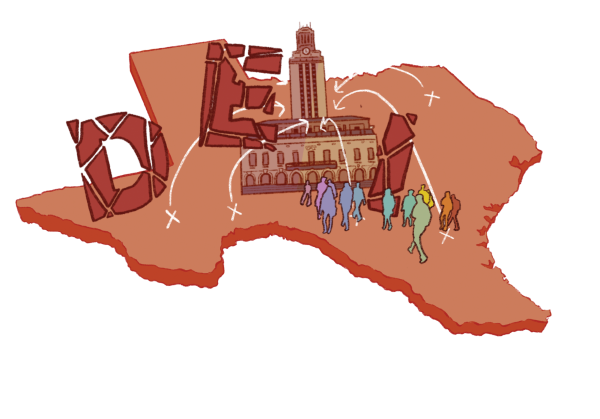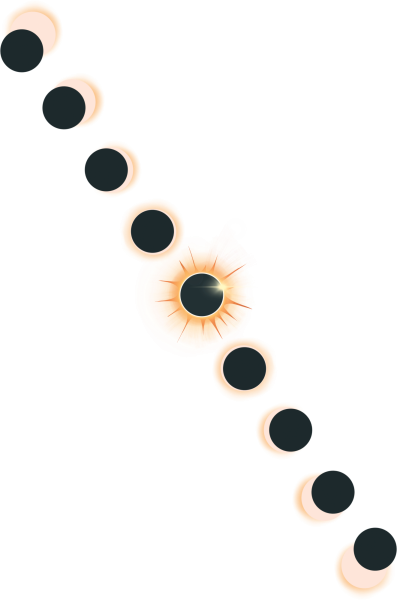Lights Out Austin: Travis County Joins Initiative to Help Save Migrating Birds
October 15, 2021
From August through November, migrating birds fly over Austin through the central flyway, a migration route that passes through North Dakota, South Dakota, Oklahoma, Kansas, Nebraska, and Texas.
In an effort to counteract the effects of light pollution, Travis Audubon, an Austin-based non-profit dedicated to bird conservation efforts, adopted an initiative called Lights Out Austin. Audbon’s program manager Caley Zuzula has been working with them since graduating Texas State University with a degree in conservation biology.
“Lights Out is an awesome campaign that is a coalition of organizations and businesses across Texas,” Zuzula said. “We are promoting this Lights Out initiative to not only businesses and cities, but also to residents. So just everybody.”
The initiative is meant to encourage Austinites to turn off all non-essential lights between the hours of 11 a.m. to 6 p.m. to aid birds in their most active times of migration. Zuzula believes that dimming the city is essential to preventing light pollution from interfering with their journey north from Oklahoma to North Dakota.
“The reason that it’s important to turn your lights out at night, or at least dim lighting, to turn off non-essential lighting, is because most birds migrate at night,” Zuzula said. “Having so much light pollution can mess up their orientation and their navigating skills.”
Executive Director of Austin Wildlife Rescue (AWF) Haley Hudnall highlights the effects of excess light in relation to migration. She details her encounters with birds with injuries related to light pollution.
“The most common are: hit by a car, caught by a cat or dog, ran into a car or window, or orphaned,” Hundall said. “Light pollution contributes to some of those run-ins with windows.”
AWF rehabilitates and releases orphaned, injured, and sick wild animals, as well as educates the public on how to coexist with wildlife. Hundall was also able to provide some other ways that one might be able to aid in a safe migration trip for birds.
“They can only trim trees in the winter months, or check before trimming otherwise to avoid cutting down nests or dead trees with hollows where baby birds may have made a nest,” Hundall said. “They can start bird watching to appreciate all the different species even in their own backyards. Most importantly for us, if they find a fledgling bird, they need to leave where it is and allow mom to raise it from the ground while it learns to fly.”
Students at LASA have begun to participate in incentives promoted by Lights Out. Junior River Ahlquist works to reduce light pollution in their own home, and encourages their friends as well.
“I would and already take steps towards participating in this initiative,” Ahlquist said. “At my house, my curtains are drawn at night and there are no lights outside. I assume this is similar at my friends’ houses.”
With the Central Flyway bisecting the United States, Austin was a key location to implement Lights Out. Zuzula noted the heavy traffic of birds through the city and its role as a migratory hotspot.
“First of all, for birds migrating North America, a very large percentage of them migrate through Texas,” Zuzula said. “We are in the central flyway and just a ton of birds who are migrating through North America are going through Texas. So that makes it an important spot.”
As Lights Out became more widespread across the state, the term “non-essential lights” caused counties to enact resolutions containing their own definition. In the absence of a conclusive definition, Zuzula offered her take on what constitutes a non-essential light.
“I say that non-essential lighting is anything that you don’t need for safety,” Zuzula said. “That for the most part eliminates a lot of outside lighting and then it also eliminates inside lighting as well. Any things that you would keep on during the night for various reasons. If you think it’s going to make your house feel significantly less safe than I consider that essential lighting, but if not, then it can be turned out.”
Lowering lights could provide benefits for birds and also award an advantage to participants by lowering the cost of the electric bill, according to Zuzula. In addition, it could help motivate individuals not already engaged with birds to participate.
“Well, it’s great for energy consumption,” Zuzula said. “If you’re using fewer lights at night, that’s going to lower your energy bill. So I think that’s a big profit, especially for people who aren’t necessarily conservation oriented.”
Ahlquist was also able to note some of the other benefits of Lights Out that they knew of. According to Ahlquist, lights can confuse a travelling bird, and cause them to waste energy.
“I like the Lights Out Initiative because window collisions are one of the leading causes of death for birds and I think it could help solve this problem,” Ahlquist said. “Specifically it affects birds migrating at night as bright lights can confuse the birds, causing them to waste energy, leading to death.”
Hundall weighed in with her view on the initiative as an animal rehabilitation expert. Not only has turning lights out benefitted birds, but it has also publicized bird conservation.
“This is a great initiative,” Hundall said. “I’m glad it is a nationwide program and Texas has joined in. I think Travis Audubon is doing a great job promoting it and spreading the word about the cause and how people can participate. I think the more people know, the more they care, so education is a huge step.”
The Lights Out Initiative will continue from now until Nov. 30, the end of the migration window. Within this timeframe, the peak migration dates are from Sept. 5 to Oct. 29.










